Acceptable performance for some pro use – unacceptable value for any use.
- Ultralight IEMs and cable
- Comfortable for semi-long sessions
- Good resolution, detail, speed, and clarity
- Excellent complement of accessories, especially the myriad ear tips and Pelican case
- The included cable is durable and light with unique connectors
- Cheap-looking and feeling, all-plastic shells
- Picky with sources, can sound quite different
- Dry and boring sound lacks personality
- Lacks bass authority and impact
- Absurd price tag

The MACH series IEMs are Westone Audio’s newest monitor additions. They range from the entry-level MACH 10 (USD$300) to the top-of-the-line MACH 80 (USD$1600), with the first number of the model indicating how many balanced armature drivers are in each IEM.
Despite Westone’s significant history and reputation in the professional audio world, I find little transparency into their engineering, design, and implementation of the MACH series. The MACH 60, priced north of USD$1000, are IEMs with six balanced armatures per side. With such a hefty price tag, are they worth it?
Unboxing and First Impression
Design and Build
Small, sleek, smooth, and ultralight? Yes. Stylish? No.
The multi-piece plastic shells are similar (if not entirely the same) from the lowest MACH 10 model to the TOTL MACH 80 model. There is no distinguishing characteristic besides the printed model number on the left IEM. I’m highly disappointed.

The six balanced armature drivers deliver sound through a single small diameter bore and longer-than-average nozzle, helping to ensure a deep and secure insertion into the ear canal. A filter is in the tube closest to the body.

The entire casing is multiple pieces of molded plastic, presumably glued together.

Cable
The 4.1 ft. (approx. 50”) long black quad-twisted Linum Estron SuperBaX cable is constructed of 168 strands of silver-plated copper with a low impedance of 0.75 ohms. The connectors have an IP-67 rating, providing robust dust and water protection.
It features durable Estron T2 connectors, a significant upgrade from MMCX connectors. Despite being a featherweight 9g, it is resistant to tangling and can handle pull forces up to 26 pounds. The cable terminates in a right-angle 3.5mm plug.

The plastic chin slider has a unique mechanism that secures well, though it cannot be adjusted with one hand. No audible microphonics are transmitted from the cable, nor is it prone to tangling – critical considerations for musicians and other audio professionals who perform or actively move around while wearing IEMs.

Comfort
The MACH 60 (and presumably all of the MACH models) are lightweight, somewhat ergonomic, and comfortable enough to forget about if you’re on the stage performing. The cable hooks hold the IEMs in place around my ears without much pressure.
Westone includes an extensive set of diverse material and size ear tips (S, M, L, XL). Huzzah!
The somewhat indistinct body form does not help with occlusion. With such a wide variety of materials, shapes, and sizes, it should be easy for anyone to achieve a good seal that will do a better-than-average job with passive noise isolation. I am thrilled to find a great fit and outside noise blocking with both the silicone and foam tips.
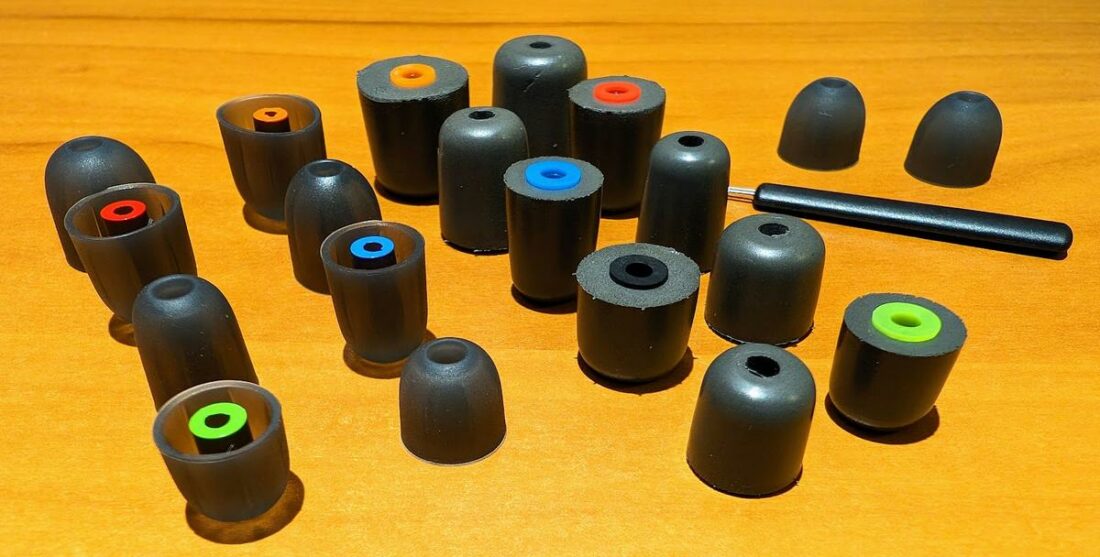
Under the Hood
The MACH 60 have six Westone Audio signature balanced armature drivers in each IEM. The drivers are configured in a 3-way system with passive crossovers. There are two drivers for bass, two for midrange, and two for treble frequencies.

How Do the Westone MACH 60 IEMs Sound?
For evaluation, I listen to a great variety of music through numerous sources, including DAPs (FiiO M15S), phones (LG V20, LG V60), portable DAC/amps (HELM Audio Bolt, DB12 AAAMP, TempoTec Sonata E44, Khadas Tea, Qudelix-5K) and desktop DAC/amps (S.M.S.L SP200, HIFIMAN EF400).
Despite the broad frequency response range reaching as low as 8Hz, the MACH 60 measure and sound FLAT, accurately describing the frequency response profile and the sound delivery.
They have no personality. Just the facts, ma’am.

‘Flat’ reference tuning does not have to mean boring. The flattest frequency responses I’ve seen or heard belong to the exceptional OLLO Audio S4X and S5X reference headphones.
They prove that flat does not necessarily equal boring. OLLO headphones are engaging, highly enjoyable, and among the most balanced headphones I’ve ever heard or worked with.

“The MACH Series is the closest replication of the sonic experience of the Elite Series custom in-ear monitor in a universal monitor. These exceptional monitors exhibit transparent highs with textured mids and fathomless lows without one element overwhelming the others.
The bass is luscious deep, midrange elements jump through the mix, and the highs are smooth and airy. Listening to the Westone Audio Mach 60 Professional In-Ear Musicians’ Monitors is a transformative experience that every musician should have.” – Westone Audio
I agree that no frequency range overwhelms the others. Otherwise, Westone Audio’s claims are, in my opinion, quite the tall tale.
“The bass is luscious deep [with] …fathomless lows” – absolutely not. “Gutless” and “boring” are more appropriate descriptions.
I must be listening to an entirely different pair of IEMs, as Westone’s description is a bombastic exaggeration.
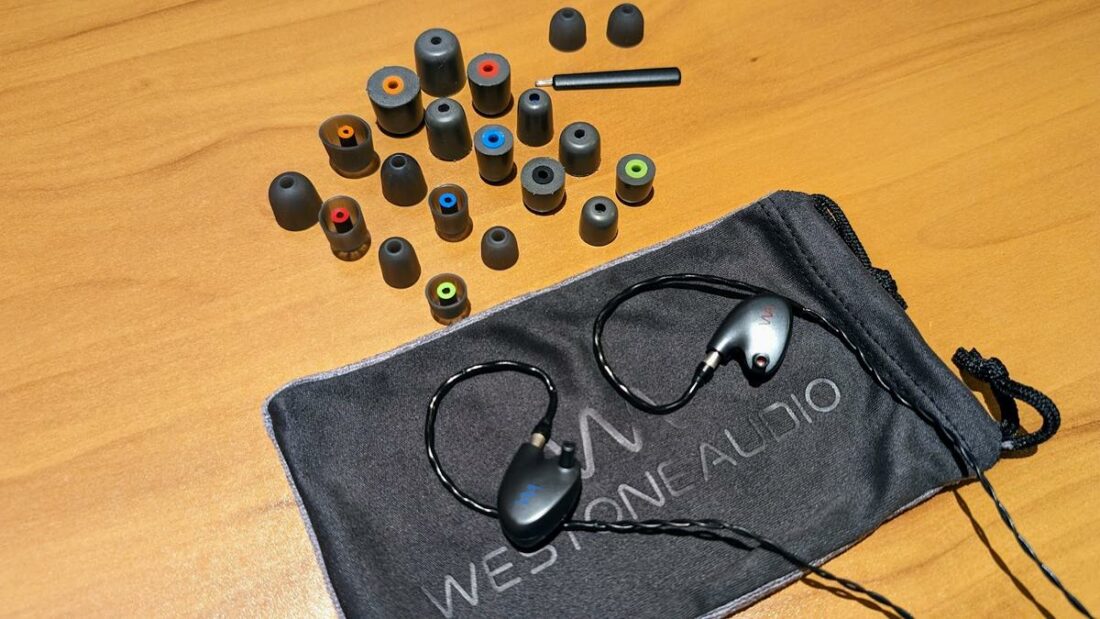
With an impedance of 35 ohms and sensitivity of 100dB, the MACH 60 are relatively easy to drive from any source. They are somewhat source-picky, which may be an advantage if these IEMs are used for mixing and mastering, as the MACH 60 are transparent enough that you will hear weaknesses in your sources and gear.
Just when I think I’m beginning to appreciate the MACH 60 and they sound better to my ears, other sounds remind me of how much these are not enjoyable.
The soundstage and imaging are merely average. The tonality and timbre are inconsistent, with instruments sounding accurate only on some tracks. On others, especially with piano and guitar, the MACH 60 can sound unnatural, either slightly muted or lacking proper resonance. Drums are the most offensive, sounding plasticky, hollow, and sometimes a muddled mess.

For this review, I visited the following artists and their home locations:
- Russia: Blessing (Shamanic Disco Remix) by Olena UUTAI
- UK: Believe by Maxwell Thorpe
- France: Medusa | Agafay Live Session by Jarl Flamar
- United States: Japanese Music Box (Itsuki No Komoriuta) by George Winston
A fascinating collection from several continents, these diverse musical productions range in ethnic origins, musical styles, and explorations in audio.
Bass
Present. Thanks to the extended low-frequency response depth and no roll-off, the bass can be heard (not felt) most of the time. The only time the bass sounds adequate is in music genres where the bass is slow and uncrowded, e.g., easy listening, some relaxed R&B, vocal-centric music, and others that are not busy with many layers.
The MACH 60 lacks impact, weight, and authority.
Regardless, there is no impact or grunt. Even after EQ, the drivers cannot handle much boost without overwhelming their capabilities, quickly resulting in severe distortion.

Midrange
If an argument can be made about where the MACH 60 are at their best, it will be between the midrange and treble. The transition between the ranges is seamless, which helps. Midrange frequencies are generally smooth and clear, mostly managing to avoid sibiliance. Some occasional shoutiness in vocal-led tracks can be too much at medium-high volumes.
Treble
The balanced armatures do a good job with resolution, clarity, and detail in the highs without excessive oversharpening. This is one area where the graph does not correspond with what I’m hearing. The graph indicates an exceptionally smooth roll-off from the peak at about 2.5 – 3 kHz (the peak at 8kHz is usually a measurement artifact).
The treble extension may sound far better than the graph due to the relationship with all the other frequencies.
The MACH 60 sound well-extended and do not seem to lack treble presence.
The treble response may benefit stage and session musicians, as the treble will not be lost nor overwhelm the listener. Detail is available at lower volumes, which is very helpful for mixing and production work. Unfortunately, with subpar timbre and lackluster bass representation, the MACH 60 are not what I would define as accurate.
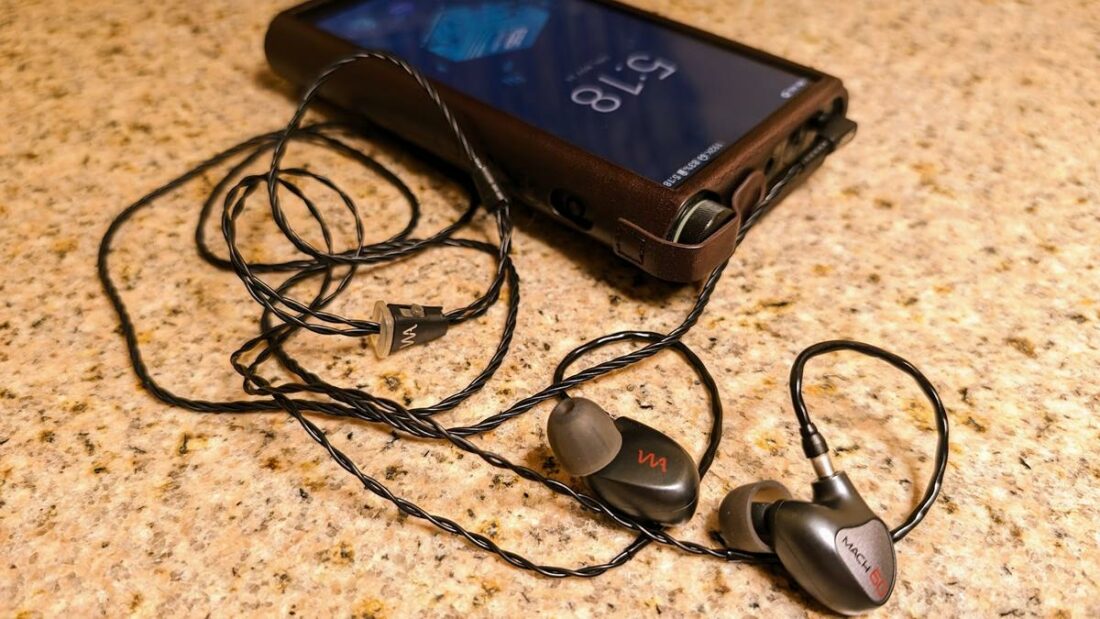
Comparisons
The Kiwi Ears Orchestra Lite features an array of eight balanced armature drives and are significantly larger, with arguably more contoured and ergonomic shells. They are far more engaging and distinct than the MACH 60 for general listening. The most shocking difference is the price. The Orchestra Lite’s MSRP is less than 25% of the MACH 60.
Any Sennheiser IE series will be better for a more engaging and dynamic experience, even the budget-friendly IE200. On sale, the unquestionably superior IE600 and IE900 are just below and above the cost of the MACH 60.

For the opposite in engaging listening, the astonishing Empire Ears Bravado MKII are a shining example of excess, executed flawlessly. They are extraordinary, a far more exotic build in every way for far less money.
Where to Buy
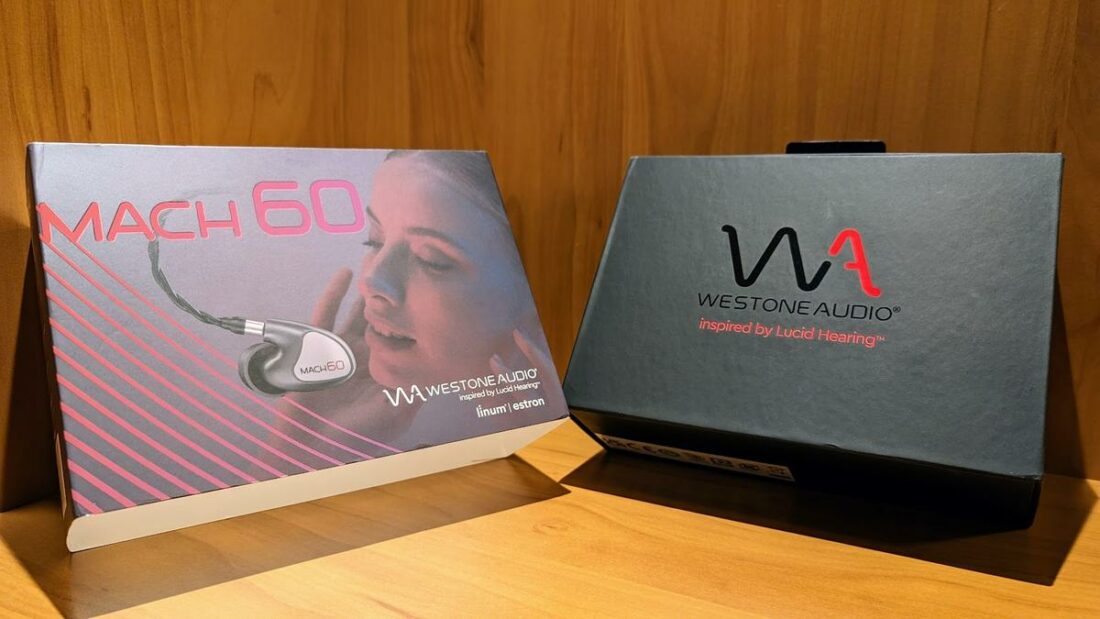
Who Should Buy This?
I can’t make a justifiable case for anyone to buy these unless you are a diehard Westone fan.
IEMs that are work tools for professionals do not have to come with an exorbitant price tag these days. There are far better options for a fraction of the price that will also do the job, if not better.
Final Thoughts
I am utterly confounded about what the Westone Audio team was thinking with the approach to the MACH series. I cannot fathom how anyone reasoned that so many models, with the only real distinction being +1 balanced armature driver and approximately USD$100—$300 for each model up, was a good business strategy.
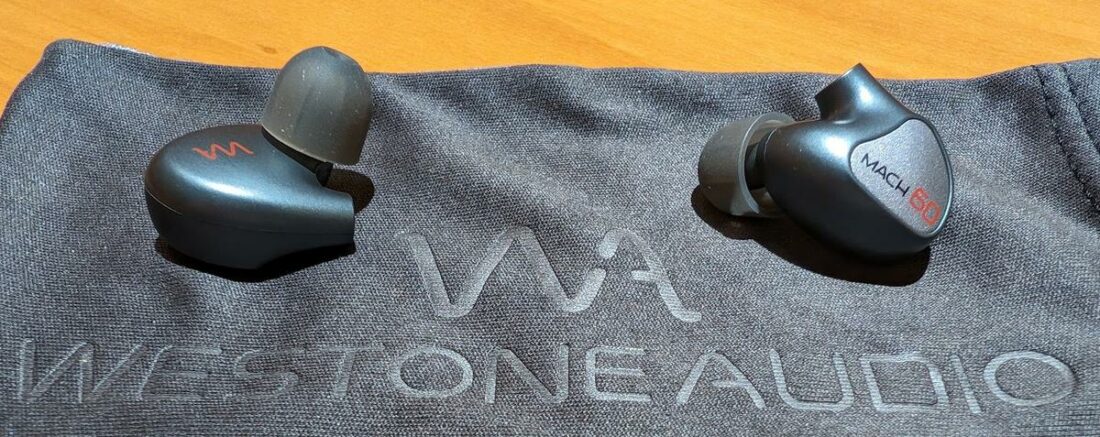
Even more insulting for the buyer is that all MACH models have the same housing. There are slight differences in the included accessories. The Mach 40, 50, and 60 come with the same SuperBaX cable. An impact-resistant case is included for models 10-30 and an OEM Pelican case for models 40-80.
Westone claims these monitors are for performers, critical listening, and pleasure listening, which is ridiculous. In addition, the marketing materials are confusing and useless for a consumer trying to determine the differences in sound from one model to the next.
There are more enjoyable options for general listening at 10% of the price. For critical listening and professional use, the MACH 60 are still insufficient to justify their cost. I cannot attest to the other models in the series, though I have heard that they vary more than I would expect.

The MACH 60 are not superior or distinct in any way other than the accessories. The heavy-duty Pelican case and myriad ear tips are not nearly expensive enough to justify the extremely high cost. Even if the plastic build is more durable than other IEMs, that doesn’t change the super low cost per unit production cost.
Fly right past these at MACH speed. Accounting for the price, they are a questionably sane purchase and an even more questionable value.

Company Overview
Westone Laboratories, later Westone Audio (acquired by Lucid Audio, LLC in 2020), created the first-ever design and manufacture of a balanced armature driver IEM. Before custom-fit earpiece manufacturing in the early 1960s, and by the time they released the world’s first custom-fit, professional-grade in-ear monitors for musicians, Westone spent decades perfecting their designs in the field of hearing health.

What’s in the Box?
- Westone MACH 60 IEMs
- 10-piece “fit kit” comprised of five pairs each of Westone Audio proprietary foam and silicone tips
- Westone Audio cloth bag/carry pouch
- 1.27m (50 inches) LINUM® Estron SuperBaX™ T2 cable
- Watertight, dustproof, and crush-resistant case Pelican™ carrying/protection case
- Cable tie and cleaning tool
- Instruction manual and Westone Audio stickers
Technical Specifications
- Style: In-ear monitor
- Shell Material: Plastic
- Drivers: Six Westone Audio signature balanced armature drivers; Low x2, Mid x2, High x2
- Impedance: 35 ohms
- Sensitivity: 100 dB/mW
- Frequency Response Range: 8Hz – 20kHz
- Plug Type: 3.5mm gold-plated plug
- Pin Type: T2 connectors
- Cable Length and Type: 1.27m (50 inches) LINUM® Estron SuperBaX™ T2 cable, comprised of 168 strands of silver-plated copper
- Weight: 3g/IEM (not including ear tip)
